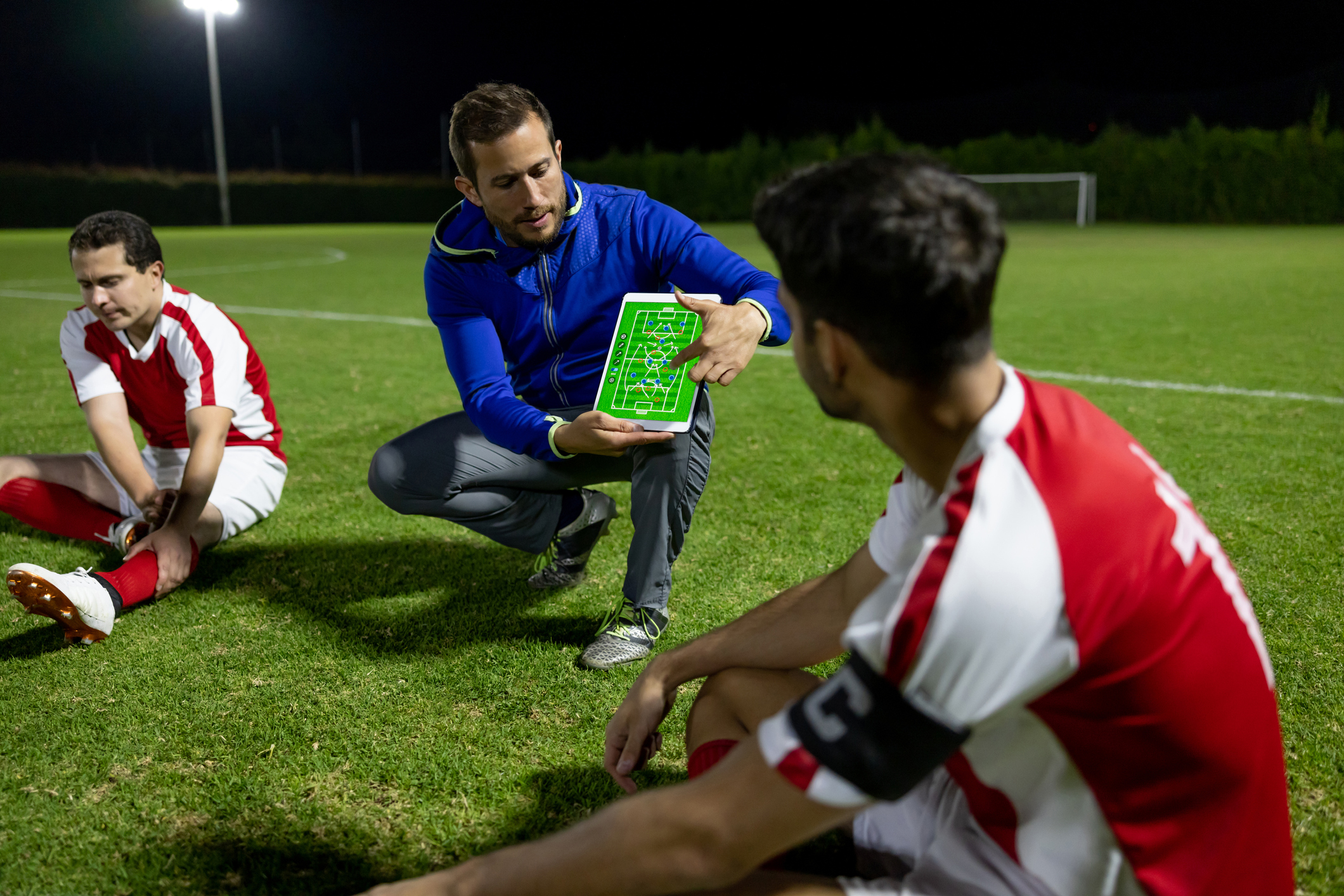Concussions have long been a part of football, and our awareness of their impact has come a long way. In recent years, numerous advancements have improved player safety and also reduced the incidence of concussions. Safety awareness for football players is at an all-time high, but there is room for improvement. Two areas presenting significant opportunities for progress are Technique and Technology. At higher levels of play, athletes employ the latest and safest techniques while also being provided state-of-the-art equipment. However, this technical expertise and advanced technology generally fails to find its way into youth programs. Youth athletes are often the last players to learn these techniques and technologies; this is problematic as younger players are generally at a higher risk of concussion.
The best way to utilize technique and technology to reduce concussions is to provide youth players with the safest and most up-to-date techniques; the best technology in the world won’t help if the application is flawed. Therefore, a guideline should be established to assist youth coaches in teaching the correct techniques. Fortunately, almost a decade ago, Seattle Seahawks assistant coach Rocky Seto developed “Hawk Tackling,” an approach to providing
a newer and safer method of tackling. Coach Seto studied techniques used by Rugby players, who, despite wearing significantly less protective gear, suffer far fewer concussions than American football players. Hawk Tackling’s goal is to take the head and neck out of the equation and put more emphasis on the use of the shoulders and arms to secure tackles.
One way to ensure that these techniques are correctly implemented at the youth level is by having senior coaches instruct younger coaches. Safe tackling methods detailed in Hawk Tackling can be passed down from senior, to junior, to youth coaches and players.
A Marshall University study determined “rugby-style” tackling lessens the risk of concussion; the probability of young athletes suffering concussions is reduced if proper tackling techniques are used; just a short instructional video or in-person training session for youth coaches can make a world of difference.
As discussed, proper technique reduces the incidence of concussion. Technology also reduces the incidence of concussion. Attenuating the forces transmitted to the brain and spine via energy-absorbing equipment is a key element in concussion mitigation. The first piece of equipment is the helmet. Leading football helmet manufacturers, including: Riddell, Schutt, VICIS, Xenith, and Light Technologies, have developed helmets rated within the Top 10 of Virginia Tech’s helmet ratings list. This rating system is based on impact testing and provides a qualitative assessment of the helmet’s performance. Youth football operates on a limited budget; the Virginia Tech ranking index provides these programs with a method to evaluate equipment costs and player safety – monies spent on protective headgear can reduce or eliminate the short and long-term costs of player concussion. Multiple concussions affect cognitive and physical abilities as these athletes enter adulthood. At the end of the day, modern-day helmet design aims to maximize comfort and protection to ensure the highest levels of performance and safety on the field. Therefore, investment in protective headgear should be the priority.

Products designed specifically to mitigate concussions are relatively new to the market; there are numerous pathways to explore regarding concussion reduction technology. Two leading manufacturers of protective equipment are 2nd Skull and Q30 Innovations: 2nd Skull makes a variety of different products, but they specialize in creating protective headbands, skull caps, and helmet accessories; Q30 Innovations makes the Q-Collar. This product is designed to be a non-invasive device that provides light reinforcement to the sides of the neck, which reduces sudden internal movement of the brain responsible for brain injuries. Clinical studies indicate neck strengthening and reinforcing can reduce the chance of concussion: a 1-lb increase in neck strength can reduce the risk of concussion by up to 5%. A combination of high-performance helmets, neck support devices, and helmet accessories can significantly reduce the head impacts encountered during helmet-to-helmet and helmet-to-ground contact.
Teaching and applying proper tackling technique for young athletes is imperative not just for the health of the player, but for the longevity of The Game. If people passionate about football want the sport to thrive, then investment in player safety is a high priority. Youth players are more vulnerable to head injuries; they should be instructed on the same techniques and afforded similar protective headgear as higher-level players.
If you’d like to receive updates and news from The United Brain Association straight to your inbox, please subscribe to our newsletter here. If you’d like to help us fund life-changing education and research into over 600 brain and mental health-related issues and disorders, please donate here. At the United Brain Association, NO MIND IS LEFT BEHIND!
You Are Not Alone
For you or a loved one to be diagnosed with a brain or mental health-related illness or disorder is overwhelming, and leads to a quest for support and answers to important questions. UBA has built a safe, caring and compassionate community for you to share your journey, connect with others in similar situations, learn about breakthroughs, and to simply find comfort.

Make a Donation, Make a Difference
We have a close relationship with researchers working on an array of brain and mental health-related issues and disorders. We keep abreast with cutting-edge research projects and fund those with the greatest insight and promise. Please donate generously today; help make a difference for your loved ones, now and in their future.
The United Brain Association – No Mind Left Behind




